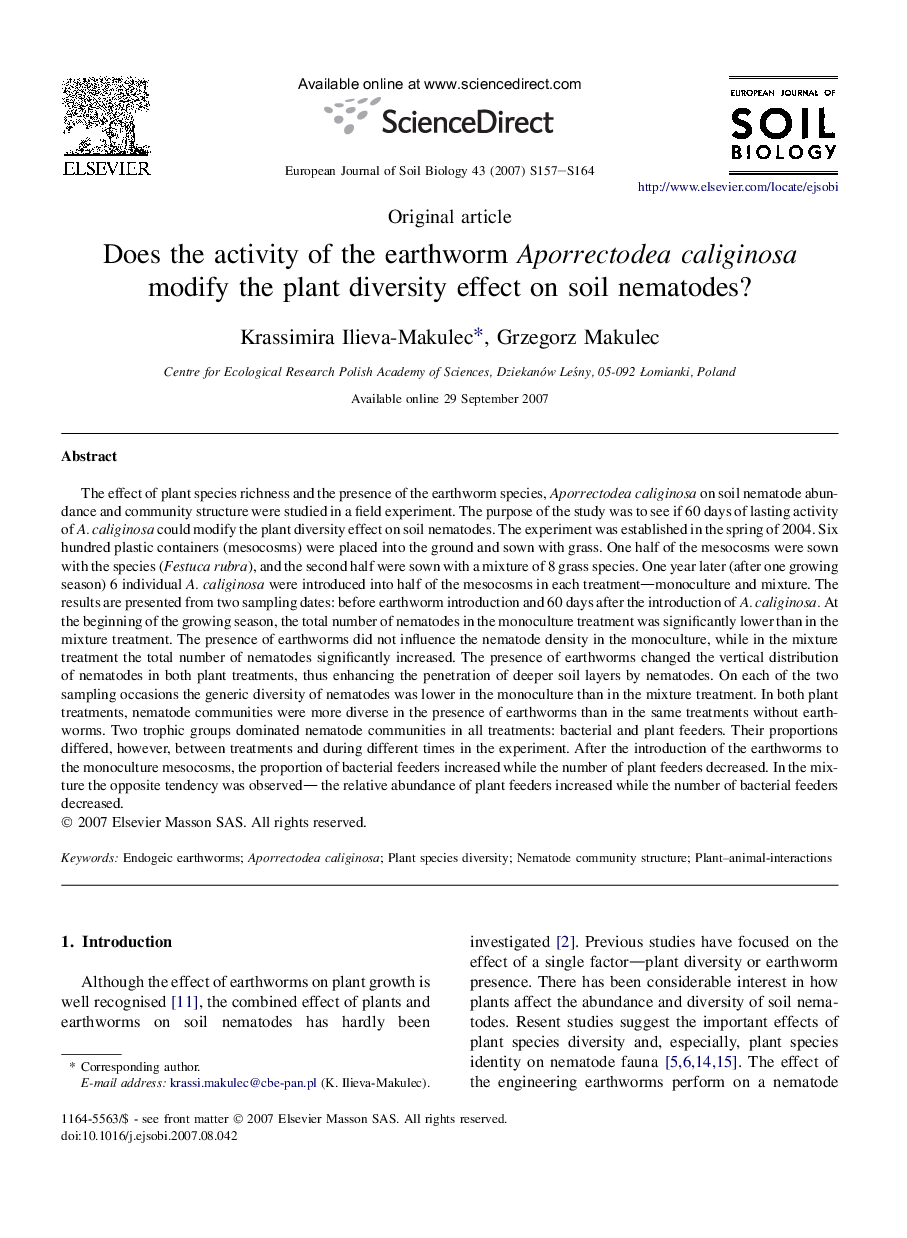| کد مقاله | کد نشریه | سال انتشار | مقاله انگلیسی | نسخه تمام متن |
|---|---|---|---|---|
| 4392462 | 1618171 | 2007 | 8 صفحه PDF | دانلود رایگان |
عنوان انگلیسی مقاله ISI
Does the activity of the earthworm Aporrectodea caliginosa modify the plant diversity effect on soil nematodes?
دانلود مقاله + سفارش ترجمه
دانلود مقاله ISI انگلیسی
رایگان برای ایرانیان
کلمات کلیدی
موضوعات مرتبط
علوم زیستی و بیوفناوری
علوم کشاورزی و بیولوژیک
دانش خاک شناسی
پیش نمایش صفحه اول مقاله

چکیده انگلیسی
The effect of plant species richness and the presence of the earthworm species, Aporrectodea caliginosa on soil nematode abundance and community structure were studied in a field experiment. The purpose of the study was to see if 60Â days of lasting activity of A. caliginosa could modify the plant diversity effect on soil nematodes. The experiment was established in the spring of 2004. Six hundred plastic containers (mesocosms) were placed into the ground and sown with grass. One half of the mesocosms were sown with the species (Festuca rubra), and the second half were sown with a mixture of 8 grass species. One year later (after one growing season) 6 individual A. caliginosa were introduced into half of the mesocosms in each treatment-monoculture and mixture. The results are presented from two sampling dates: before earthworm introduction and 60Â days after the introduction of A. caliginosa. At the beginning of the growing season, the total number of nematodes in the monoculture treatment was significantly lower than in the mixture treatment. The presence of earthworms did not influence the nematode density in the monoculture, while in the mixture treatment the total number of nematodes significantly increased. The presence of earthworms changed the vertical distribution of nematodes in both plant treatments, thus enhancing the penetration of deeper soil layers by nematodes. On each of the two sampling occasions the generic diversity of nematodes was lower in the monoculture than in the mixture treatment. In both plant treatments, nematode communities were more diverse in the presence of earthworms than in the same treatments without earthworms. Two trophic groups dominated nematode communities in all treatments: bacterial and plant feeders. Their proportions differed, however, between treatments and during different times in the experiment. After the introduction of the earthworms to the monoculture mesocosms, the proportion of bacterial feeders increased while the number of plant feeders decreased. In the mixture the opposite tendency was observed- the relative abundance of plant feeders increased while the number of bacterial feeders decreased.
ناشر
Database: Elsevier - ScienceDirect (ساینس دایرکت)
Journal: European Journal of Soil Biology - Volume 43, Supplement 1, November 2007, Pages S157-S164
Journal: European Journal of Soil Biology - Volume 43, Supplement 1, November 2007, Pages S157-S164
نویسندگان
Krassimira Ilieva-Makulec, Grzegorz Makulec,